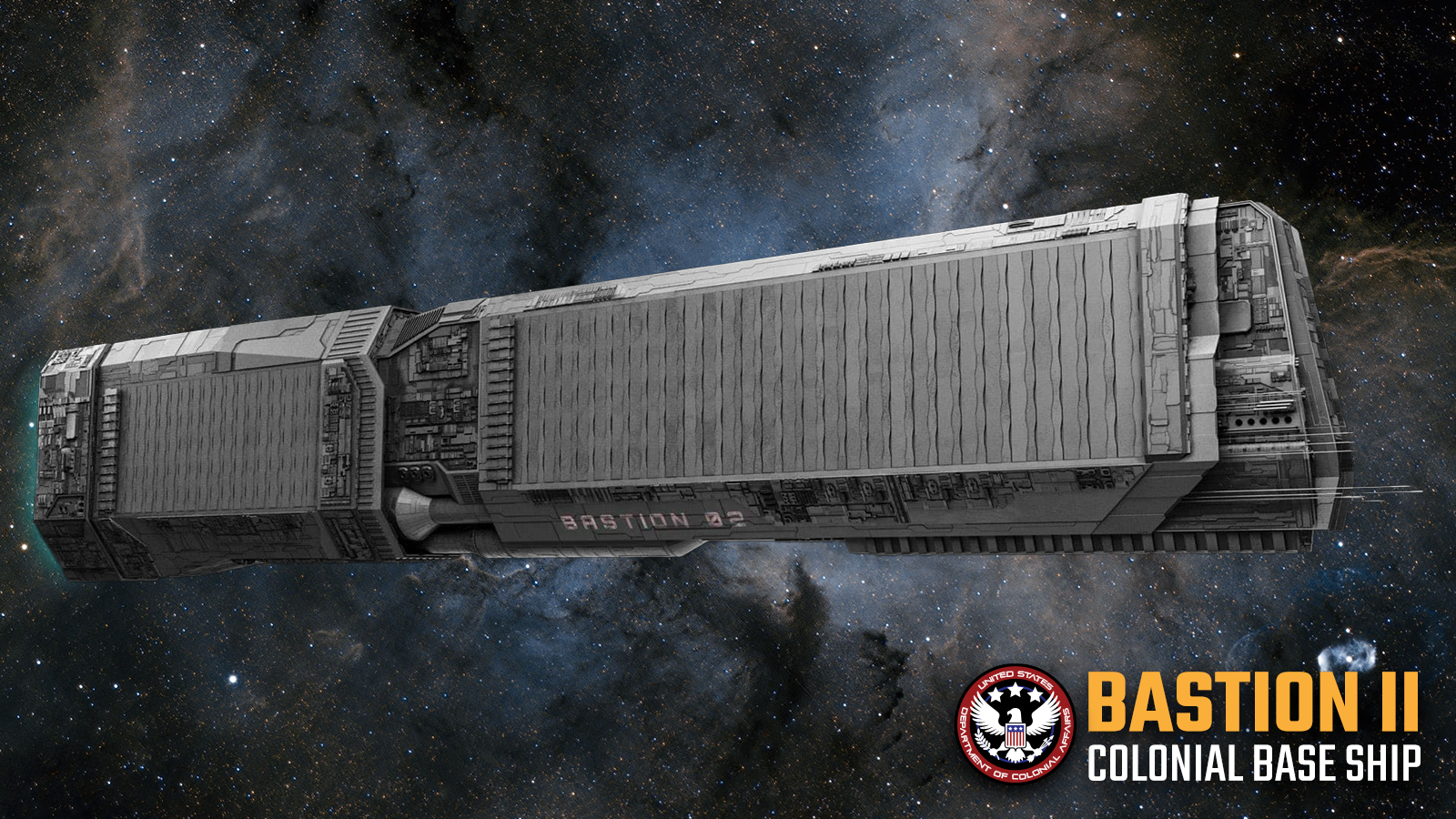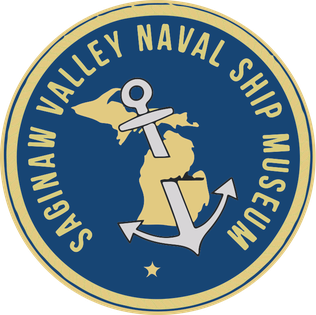Ships of the Outbound Fleet, 2219
Military Vessels

SHIP CLASS:
Roosevelt-Class Orbital Destroyer
MANUFACTURER:
Windfall Starship Systems, Inc.
ACTIVE COMMANDING OFFICER:
Capt. R. Morcov
COMMISSIONED:
2162
DECOMMISSIONED:
2217
RECOMMISSIONED:
2219
LENGTH:
187 Meters
BEAM:
39.5 Meters
COMPLIMENT:
40-95, Depending on configuration and mission profile
ARMAMENTS:
x4 WMR-08 “Radiant” Magnetic Railguns
x4 TYR-G5 Torrent SSM Batteries
DRONE SUITE:
(Removed in 2217)
STANDARD PROPULSION:
x2 Falcon-Class Advanced Ion Engines (AIE)
x2 COMET-II AIE
x4 Titan-Class Maneuvering AIE
GRAVITATIONAL PROPULSION:
x1 Hawking-IV Gravitational Drive
ADDITIONAL PROPULSION:
x1 Generation III Linear Skip Drive
Since the Solar War, the famed USSC Ascendant Dawn has stood as a proud symbol of American military might, often referenced with the same awe and reverence as the USS Constitution. Though outdated and outgunned by most modern vessels, the Dawn was nonetheless chosen as the flagship of the Outbound Hope Mission in the earliest days of planning.
The Dawn was built as a part of a limited run of Roosevelt-Class destroyers, designed and constructed by Windfall Starship Systems at Titan. Ongoing American losses in the Solar War had prompted Windfall engineers to unveil many of their experimental designs in weapons, propulsions and defensive countermeasures. Nearly all of them came together in the relatively small package of an orbital destroyer. Smaller and sleeker than many of the American warships of its day, the Roosevelt design was fast and maneuverable. Meant to be used in conjunction with the New Liberty dreadnought, the Roosevelts could incorporate hit and fade tactics that were meant to draw enemies toward the significantly more formidable weapons systems of the New Liberty.
Despite the promise of these innovations, the real secret to the success of the Dawn and her sister ships was in the vessels’ linear skip drive (LSD), an experimental propulsion system that allowed the ship to transport itself instantaneously to a nearby location, appearing to “skip through space” by observers. The skip drive would prove immensely advantageous, though not without extreme risk.
The skip drive saw its first and only combat use at the Battle of Titan, a colossal orbital battle that would propel the Ascendant Dawn to American legend. As Chinese warships overwhelmed American defenses, even the great New Liberty flagship was crippled beyond repair. When a Chinese nuclear missile finally struck the command bridge of the New Liberty, the American high command was completely destroyed. The outnumbered US ships scrambled for leadership, with some calling for a complete retreat.
Yet famously, Captain Miles Edson of the Ascendant Dawn refused to back down, instead skipping to the forefront of the battle – and the New Liberty’s exposed reactor. In a fiery salvo, the Dawn struck at the wreck of the dreadnought, then disappeared before the hulk began to detonate. A massive burst of radiation crippled Chinese sensors and sent a wave of debris that devastated everything in its wake. Safely outside the blast, Edson rallied the remainder of the US fleet to ultimately win the day. The war concluded soon after, with Edson and the Dawn instantly cementing their place among the pantheon of American heroes.
Though Edson would go on to receive the Congressional Medal of Honor and a host of USSC accolades, the future of the Dawn was far less glamorous. In the decades to follow, the ship alternated between a military asset, a marketing tool for Windfall, and a favored prop of ambitious politicians. Officially, the ship was assigned to the defense of the shipyards at Titan, though lengthy studies and upgrades by its designers often saw the ship at Luna for months on end. Such tenures were often followed by expansive marketing packages that featured the ship heavily and reminded consumers of “the true value of Windfall Starship Systems.” Elected officials similarly paraded the vessel over the Terran United States and the extraplanetary colonies. The flamboyant President Dougy Olson – ever the showman – even insisted the Dawn and a squadron of Hawk-class gunships fly overhead immediately after he swore the oath of office.
By the 2190’s, the Dawn had begun to fade from public view and lengthy journeys between Titan and Earth and Luna proved increasingly expensive and difficult. The ship was reassigned to monitor shipping traffic against a sudden surge of piracy, a role which seemed unbecoming of such a famous vessel. It was here that key members of the Ascendant Dawn’s crew became involved in the Grayson Conspiracy, an ACA-backed uprising within the USSC that threatened to target several key military sites. Though rebels attempted to seize control of the ship, then-Captain Peter Kohler resisted. Reclaiming the Dawn, Kohler assumed command of the nearby loyal ships and ultimately took the fight back to so-called Admiral Grayson. The subsequent victory earned Kohler his admiralship and the Dawn a brief stint back in the public eye.
In 2217, the USSC concluded that the Ascendant Dawn was long overdue for retirement. The ship was officially decommissioned and relocated to a permanent drydock in New Washington’s Hero Plaza. The ship was outfitted as a museum ship intended to host millions of visitors every year.
But the Dawn’s residency as a museum ship would not last long. Even before the ship’s decommissioning, it had already been considered as the new flagship for the slowly-growing Outbound Hope Mission. As the DCA, USSC and Windfall agreed to assert a military escort for the civilian population, the Dawn’s role became all but assured, especially as the Flame of Liberty and Freedom’s Cry – two of the Dawn’s surviving sister ships from the Battle of Titan – were allocated to the project.
The Ascendant Dawn was hastily recommissioned and outfitted for the mission, turning the ship into a space-bound jack-of-all-trades. Officer areas were repurposed for the fleet’s colonial governor, who would stay aboard the vessel until the massive Bastion could be fully deployed at the destination. A secure portion of the ship was converted into a Martian embassy, supplementing the Martian work aboard their own vessel, the Allan Sandage. A region of the ship for Orbital Marines was established, a compliment the Dawn had lacked even in the days of the Solar War. Areas specifically for journalists were also set aside, allowing the press to document the monumental event at its source.
As the Outbound Hope fleet looks to venture beyond the Sol System and into the unknown, they bring with them the rich legacy of the Ascendant Dawn into a new and glorious future.
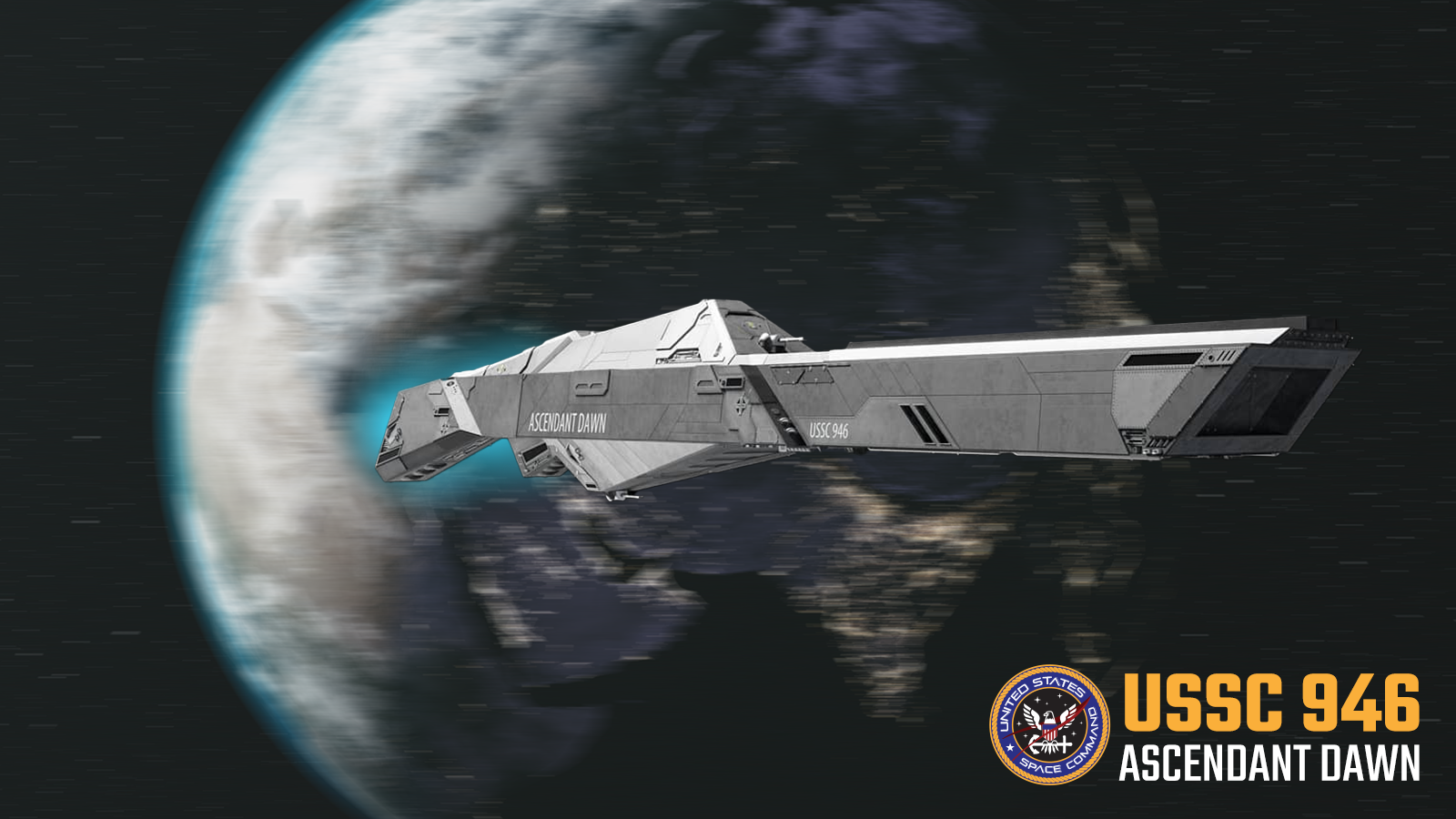
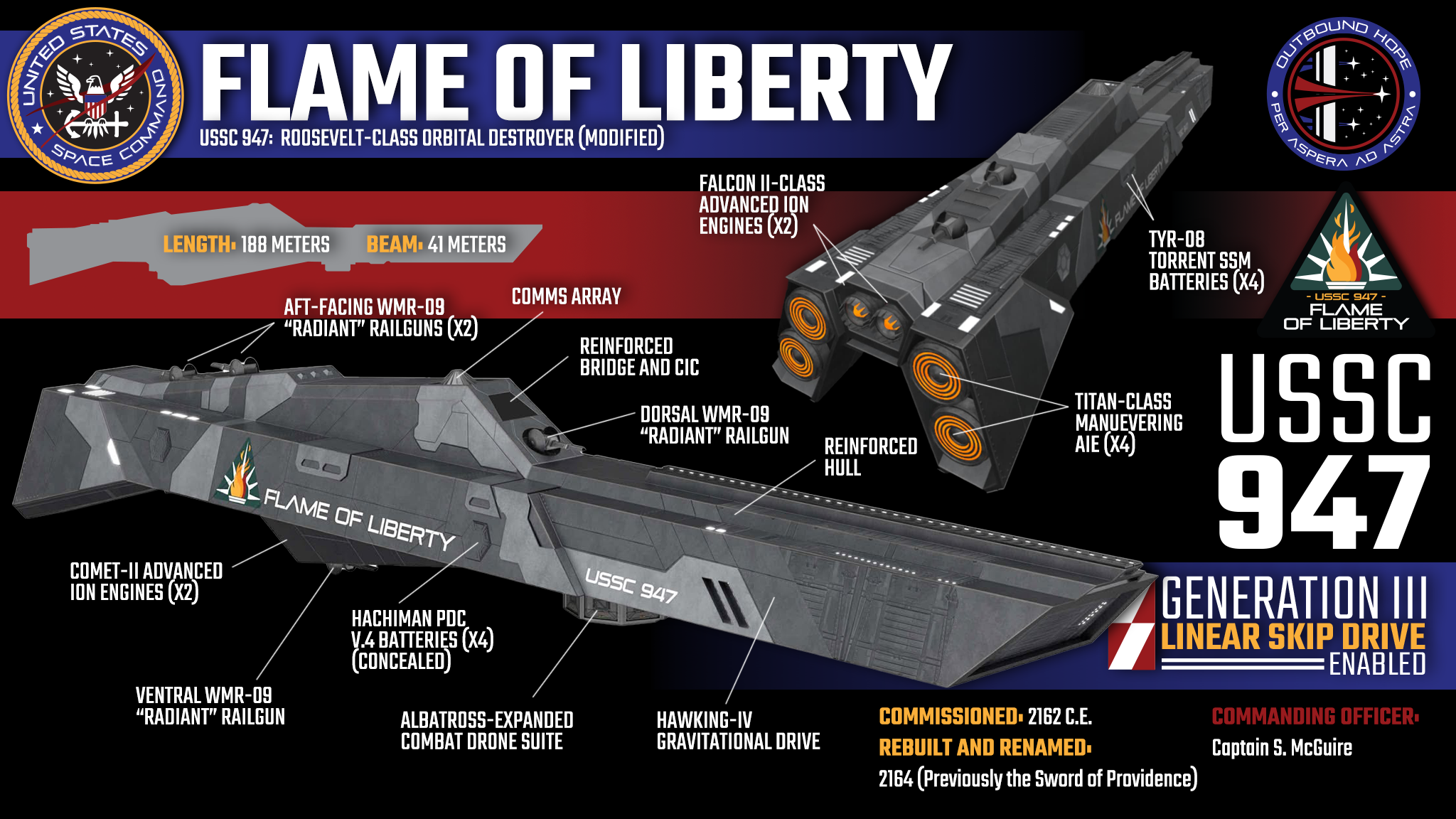
SHIP CLASS:
Roosevelt-Class Orbital Destroyer
MANUFACTURER:
Windfall Starship Systems, Inc.
ACTIVE COMMANDING OFFICER:
Capt. S. McGuire
COMMISSIONED:
2162 (As the Sword of Providence)
REBUILT AND RENAMED:
2164 (Renamed the Flame of Liberty)
LENGTH:
188 Meters
BEAM:
41 Meters
COMPLIMENT:
60-110, Depending on configuration and mission profile
ARMAMENTS:
x4 WMR-09 “Radiant” Magnetic Railguns
x4 TYR-G8 Torrent SSM Batteries
x4 Hachiman PDC v.4 Batteries
DRONE SUITE:
x1 Albatross-EXPANDED Combat Drone Suite
STANDARD PROPULSION:
x2 Falcon II-Class Advanced Ion Engines (AIE)
x2 COMET-II AIE
x4 Titan-Class Maneuvering AIE
GRAVITATIONAL PROPULSION:
x1 Hawking-IV Gravitational Drive
ADDITIONAL PROPULSION:
x1 Generation III Linear Skip Drive
While the Ascendant Dawn was and continues to be considered the hero of the Solar War in the minds of the American public, some have asserted other vessels were far more worthy of the title. Such was the case for the Flame of Liberty, another Roosevelt-Class orbital destroyer that rose to notoriety during the war’s penultimate battle over Titan.
Much like the Dawn, the Flame was one of twelve Roosevelts constructed by Windfall Starship Systems and completed in the spring of 2162. Initially, the ship was christened as the Sword of Providence and was immediately given over to the command of Capt. Melanie Bhatia. The Sword’s agility, formidable armament and inclusion of the controversial linear skip drive made it a revolutionary design, meant to support the slower, hulking flagship – the New Liberty. The Sword of Providence was officially commissioned on April 2, 2162 and immediately deployed alongside her sister ships to defend the Windfall shipyards at Titan. Much like the bases at Luna, the shipyards had become a constant target for the superior numbers of the Chinese fleet since the conflict’s beginnings.
Just four months later, the Battle of Titan earned the Dawn its place in history with Capt. Miles Edson’s famous gambit. Maneuvering his vessel to strike at the crippled New Liberty, the Dawn fired on the reactor, igniting it and crippling the Chinese fleet. As the Dawn skipped away, Edson rallied the remaining American ships and soon won the day.
Yet far less known are the efforts of Capt. Bhatia and the crew of the Sword. After successfully harrying Chinese cruisers for several hours, the imminent destruction of the New Liberty dreadnought forced Bhatia to change tactics. The flagship, having borne the brunt of Chinese missiles and railguns, found itself on the brink of a complete systems collapse. As the crew of the New Liberty began an immediate evacuation, the all too fragile escape capsules became easy prey for enemy ships.
Hearing reports of the flagship’s defeat and with a sudden lack of communication from high command, Bhatia made the decision to disengage hostilities and launch a full-scale rescue operation. The Sword of Providence rushed toward the New Liberty, utilizing its skip drive to hop past storms of debris and enemy missiles. Engaging magnetic systems meant for securing cargo, the Sword gathered up over half a dozen escape capsules before skipping back to the Ark of Mercy – one of the fleet’s remaining medical cruisers. With its cargo delivered safely, Bhatia repeated the run four more times before Edson performed his famous maneuver aboard the Ascendant Dawn. The New Liberty was completely annihilated and much of the surrounding region was doused in a wave of deadly gamma radiation.
While Edson rallied the American ships to strike at the vulnerable Chinese fleet, Bhatia saw no reason to discontinue her previous efforts. Yet earlier runs had taken their toll, damaging many of the Sword of Providence’s systems, including radiological defenses. Knowing that continued radiation exposure would place all their lives in jeopardy, she addressed her crew as they unloaded their most recent batch of survivors:
“Crew, this is your captain speaking. What we have experienced here today is more than any should be asked to endure and yet, endure it you have. Each and every one of you is a reflection, not only of the best parts of our nation… but of all humanity. The lives we have fought for and saved here today are a testament to your selflessness, your courage, and your compassion.
“I have been informed that the radiation protections of the Sword have been compromised and, though not yet to lethal levels, we have all already received more than our fair share of rads. I cannot, in good faith, order you all back to stations. But there are still people out there, people who need our help. And so you all have a choice before you: For those of you who wish to stay aboard the Ark, I advise you to do so without shame or reservation. Go home to your families and your loved ones. Carry our spirit forward and tell our stories. You have fought this war to its end as far as I see it and you have earned your respite and honor.
But this ship… our ship… the Sword of Providence… stands ready to support our comrades left across the battlefield, no matter the cost. I ask not as your captain but as a fellow human being that you join me in bringing those people home. Let us be the flame that lights the path to hope…”
– FINAL TRANSMISSION OF CAPT. MELANIE BHATIA (USSC 947 SWORD OF PROVIDENCE)
As Bhatia concluded her words, she instructed her helmsman delay departure from the Ark of Mercy, to give those who wanted to leave time to do so. Yet immediately it became apparent: none of the crew sought to disembark. Bolstered by that knowledge, the Sword left the Ark of Mercy behind and skipped back into the irradiated battlefield, completing another three successful runs.
On her fourth run, a Chinese destroyer delivered a direct hit to the now-limping Sword, crippling the ship’s engines and shutting down its reactor. The disabled vessel careened into the debris field, bouncing from impact to impact. Within moments, the entire crew – including Capt. Bhatia – were lost and the Sword became another wreck adrift over Titan.
In the months to follow, American haulers returned to the site of the battle to begin gathering the dangerous scrap that now floated perilously close to the bases over Titan. Among the recovered debris was the wreckage of the Sword of Providence, which was hauled back to drydock to remove its classified – and by that time illegal – skip drive technology.
Though the USSC intended to scrap what was left of the Sword, the former vessel quickly found a swell of support. From the ship’s eight successful rescue runs, 186 individuals from the New Liberty’s crew had been saved. 152 of them would survive their injuries past the war. The survivors demanded that the Sword be rebuilt and restored in honor of those that had given their lives for their sake. The USSC denied the request at first, but the survivors continued to petition the American government, earning the support of several high-profile members of Congress. The USSC finally conceded. And the ship was rebuilt and returned to active status in October of 2164, its crew comprised exclusively of service members who had survived the New Liberty because of Bhatia and her crew’s efforts. To further commemorate the valiant act, the Sword of Providence was renamed the Flame of Liberty, commemorating both the words of Captain Bahtia’s famous speech and the vessel the crew had once served.
Though other Roosevelt destroyers that survived the Battle of Titan would continue on into active service, the Flame of Liberty was in a class all its own. Its reconstruction had further updated the vessel, adding significantly more armor plating and a new complement of weapon systems. While most Roosevelt ships were intended to support larger craft, the Flame had been outfitted to operate far more independently. As a result, most of the Flame’s future missions over the next several decades paid homage to the ship’s moment of glory. While patrols of trade convoys were always on the table, the Flame was often utilized for high-profile extractions, refugee support and humanitarian escort.
In the 2190’s, as most Roosevelt destroyers were beginning to be retired, the Flame was given another series of technological upgrades and began to be utilized as a transport for covert operations. Its drone suite was significantly upgraded, allowing for a complement of remote fighters. Working with the US Orbital Marines, a full barracks was added to the ship’s lower levels, assisting a series of black ops missions that have only recently been declassified. Their engagements included everything from undermining the growth of the Grayson Rebellion to countering attacks by the Guardians of the Gates of Heaven. Most recently, two pairs of Hachiman perimeter defense cannons were added to the Flame’s already impressive armament, greatly improving the vessel’s ability to repel enemy attacks.
Though the ship’s linear skip drive remained aboard the vessel throughout the decades, reports show it was never utilized. Doing so would violate any number of interplanetary treaties. Its use was seen as something only for the most extreme of emergencies that fortunately never came to pass.
In 2218, the Flame of Liberty was, at long last, slated for decommissioning. Its final duties were to patrol the busy shipyards at Titan, who were already alive with the construction of the new Outbound fleet. When Admiral Peter Kohler caught wind of the intended retirement, he quickly intervened and suggested “the tough old girl” be given one last assignment within the ranks of the Outbound fleet and to fly once more with her sisters.
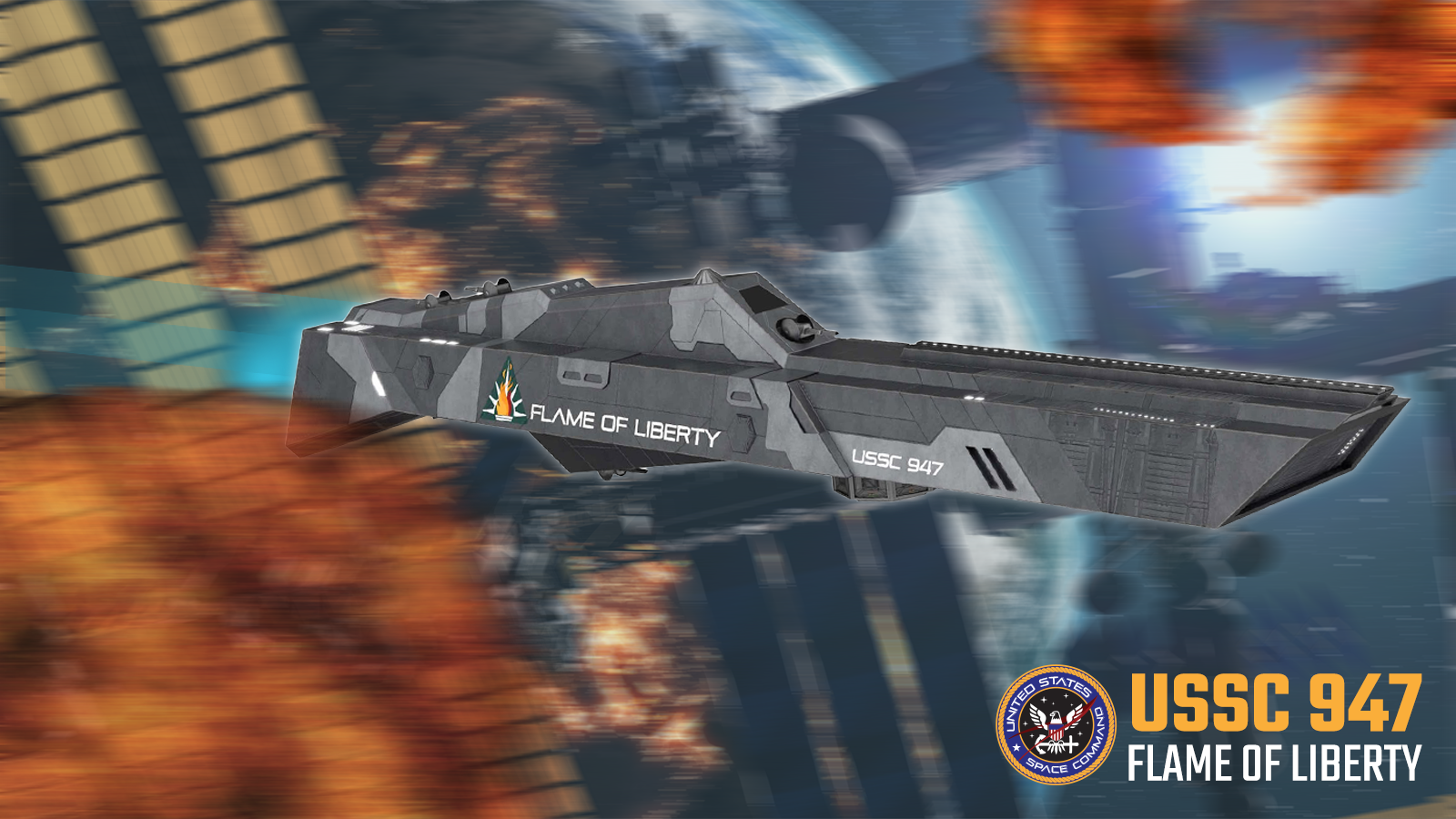
<<<ENTRY LOADING…>>>
Civilian Administrative Vessels
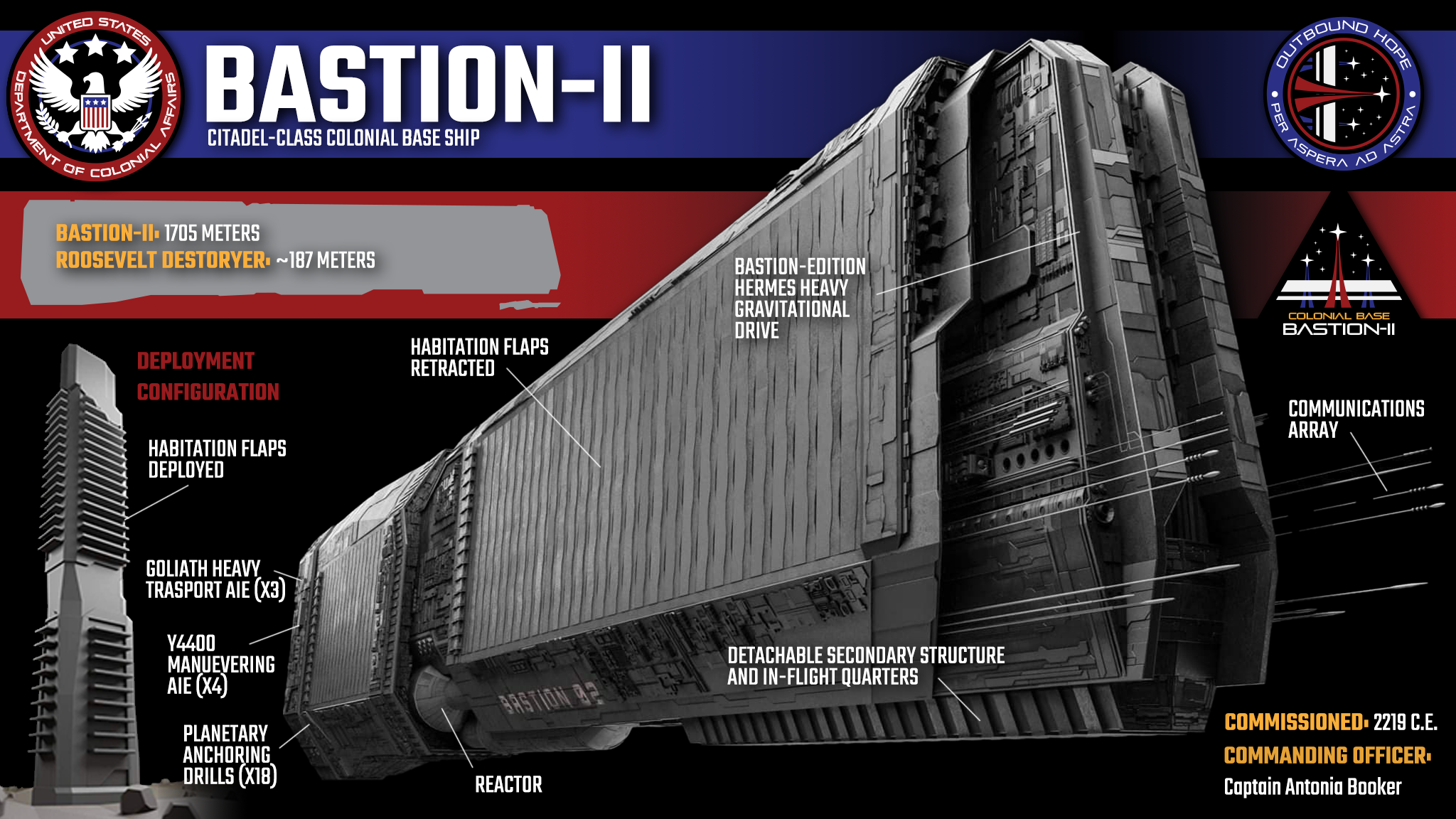
SHIP CLASS:
Citadel-Class Base Ship
MANUFACTURER:
Windfall Starship Systems, Inc.
ACTIVE COMMANDING OFFICER:
Capt. A. Booker
COMMISSIONED:
2219
LENGTH:
1705 Meters
COMPLIMENT:
Crew: 50, Passengers/Inhabitants: 700-12,000, depending on transit or settlement configuration
ARMAMENTS:
None
STANDARD PROPULSION:
x3 Goliath Heavy Transport AIE
x4 Y4400 Maneuvering AIE
GRAVITATIONAL PROPULSION:
x1 Bastion-Edition Hermes Heavy Gravitational Drive
The Bastion-II is the second incarnation of base ships designed by Windfall Starship Systems for use in Outbound missions through the Bifröst. Its predecessor, the nearly-identical Bastion, was lost along with the rest of the Outbound Discovery fleet in 2169. Both Bastion ships are wonders of engineering: At nearly two kilometers in length, each was designed to be a city in and of itself.
The Bastion-II design is intended to accommodate two distinct phases of the journey through the Bifröst Station. For the transport phase, the ship is configured to travel much in the same way as any of the other vessels in the fleet, making good use of both sizable advanced ion engines and an impressive gravitational drive. Though well-equipped, the Bastion is still considered slow and will likely trail behind the far smaller and more maneuverable escort and transport ships.
Despite its massive size, the ship has been designed to fit perfectly through the Bifröst’s central opening. With less than ten meters of space for error, the actual traversing of the station will be handled exclusively by the ship’s robust Systems Artificial Intelligence (SAI) so as not to damage the vessel. Such narrow margins ensure that the Bastion is able to maximize space that will later be utilized by the Outbound colonists themselves.
In this travel configuration, the vast majority of the Bastion is intended to remain unoccupied and atmospherically decompressed, saving the bulk of the vessel’s life support systems for the next phase of the journey. The roughly 50 crew persons – as well as more than 700 passengers – occupy only a minor portion of the forward hull, often referred to simply as “The Pod.” The Pod’s orientation runs perpendicular to the rest of the ship, a configuration remedied only in the next phase of the ship’s design. In the event of extreme emergencies, The Pod is capable of detaching much like an escape capsule but lacking any significant propulsion systems beyond basic maneuverability.
Once the Outbound Fleet arrives at the intended destination, the next phase of the ship’s design will begin. Upon entering the atmosphere, the Bastion – again guided by the ship’s SAI – will pitch sharply skyward, ultimately landing with its propulsion systems planted firmly on planetary soil. At this point, a series of 18 massive drills will open at the aft of the ship, anchoring the ship into the ground as a permanent and leveled structure. Once secured, dozens of habitation levels will fold outwards, allowing glass-covered ‘exterior’ spaces that will eventually be opened to the outside environment once the atmosphere is secured.
During this process, The Pod will jettison away from the now-towering skyscraper. Its thrusters will land it safely on the ground where another set of anchor drills will work to establish a smaller – though still sizable – seat for the new government. In this way, the Pod is able to maintain its interior orientation and establish a separate and secure space for colonial administration.
Once fully deployed, the Bastion will serve as the focal point of the new Outbound colony, with thousands of residences and countless shops, restaurants and recreational areas. A central atrium will reflect natural sunlight to the structure’s lowest depths, feeding scores of gardens and interior green spaces. The top levels include an impressive auditorium space capable of holding more than 2500 people and can be used for large gatherings such as academic presentations, political meetings or even concerts and dramatic performances. The structure’s bulky communications array will quickly be activated to intercept and broadcast Sol-based interweb feeds, providing news and entertainment to the entire colony by means of the oscillator deployed at the Bifröst.
Though the Bastion — and in particular, The Pod — will eventually serve as the seat of the new government, the USSC and the DCA have both agreed the Bastion should not be the exclusive transport for colonial officials through the Bifröst and on to the planet. This decision was partly to curb the effects of accidents while in transit but also to offer officials extended facetime with members of the fleet. Government leaders should be dispersed, travelling safely within the security of USSC vessels. Only Hellen Perry, the deputy governor, will be stationed aboard the Bastion itself, with the governor and other ministers distributed between the Roosevelt and Lincoln-Class military escorts.
While the Bastion is undoubtedly an essential piece of the Outbound mission, it is not without its controversy. American taxpayers paid over four trillion dollars to construct the vessel, though many believed the funds would be better allocated toward a greater number of smaller ships and structures. Such an alternative would minimize the transit risks and costs associated with such a colossal design. Last-minute budget shortfalls caused some to question the viability of the Bastion‘s life support systems and wonder whether they will be able to persist until the planet’s atmosphere can be made stable and its air breathable. Still, American politicians and Windfall engineers continue to hail the Bastion-II as “one of the great engineering marvels of our age,” and look forward to its use as a centerpiece of a bustling and thriving extrasolar colony.
